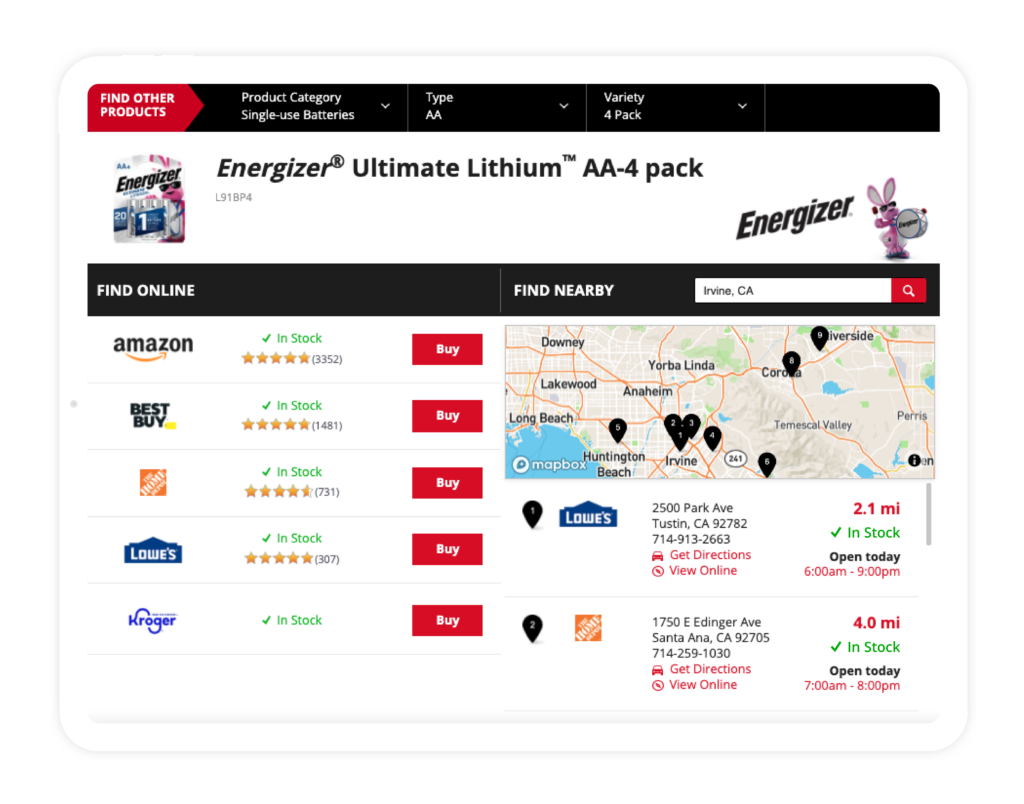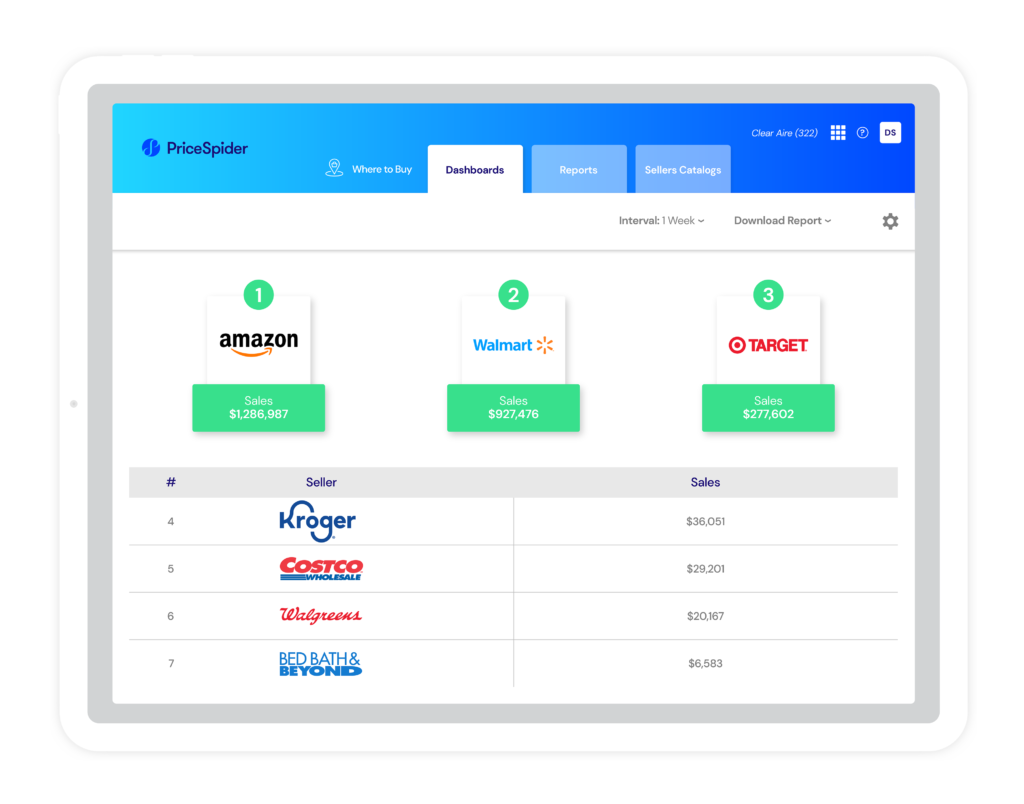Influence is power! Also, low-key, influence can be a real pain in the rear. Think about it. Try getting your kids to focus on one thing for just 10 seconds. It’s mathematically impossible. Now imagine mobilizing hundreds, thousands, even millions of consumers toward one action. Forget about it. Like parenting, it’s difficult for one person to manage on his or her own. That’s why brands spread out the work through distributed marketing.
Distributed marketing, also known as channel marketing, is a marketing model where an organization markets its products or services through various distribution channels, such as retailers, resellers, agents, franchisees, dealers, representatives, or branches. Just as sales are distributed across channels, so are the marketing efforts that drive those sales.
These partnerships allow brands to access a much wider audience than through their own stores, facilities, and marketing systems. By coordinating marketing efforts with your distributors, you can increase your brand’s penetration in their customer bases and local markets, leverage the strength of their brands, and utilize their knowledge of local markets.
This marketing relationship has some unique challenges as well. By allowing another party to market your products or services, you run the risk of your brand being poorly represented to your target audience. If partners don’t follow your brand guidelines, it can weaken your brand integrity.
Whether you’re selling products through retailers and resellers, providing insurance policies through third-party agents, booking hotel reservations through an external service, or something else, distributed marketing is a model worth understanding. In this guide, we’ll cover the benefits of distributed marketing and the major challenges to it, giving you tips along the way about how to execute it well.
Since PriceSpider serves ecommerce brands, we’re going to focus on working with online retailers and third-party sellers, but the distributed marketing principles are the same for other organizations and industries.
Let’s start by taking a closer look at the benefits of this model.
Benefits of distributed marketing
When retailers and resellers advertise and market your products, there are several key benefits for your brand. It gives you greater reach by exposing your brand to more people, increases market penetration by helping your brand stand out to partner customers, associates your brand with your partners, and incorporates your brand into specialized promotions that are relevant to the unique audience.
Greater reach
In some distributed marketing models, your brand may have a greater audience and marketing infrastructure than your distributors, and each distributor only incrementally expands your reach. But that’s usually not the case in ecommerce. In ecommerce, retailers often have far more resources, much larger audiences, and more established marketing channels than the brands they carry.
When you get a retailer to advertise your products and include you in their promotions, it gives your brand a major boost. And while distributed marketing often involves creating incentive structures for your partners (such as giving them a marketing budget or using a shared cost structure), the cost to reach the same amount of people is significantly lower than it would be for you to market to them on your own.
Increased market penetration
Not only does distributed marketing put your products in front of more people, increasing your target audience’s exposure to your brand, it also helps increase your prominence within the retailer’s customer base.
To an ecommerce brand, every retailer is effectively a separate market. They have an established base of customers who prefer to shop at their stores and take advantage of their perks. When a retailer elevates your brand in their promotional materials, this increases your prominence to your partner’s customers and helps elevate your products above your competitors, similar to receiving better placement on the shelf — or on the digital shelf, a better ranking in search results.
Brand association
Some brands, such as Nike, are so well-known that their name carries greater brand recognition than the vast majority of retailers. Carrying Nike often bolsters a retailer’s brand reputation more than it bolsters Nike’s. But for most brands, the inverse is true. When a major retailer carries your brand, it often does more to help your brand reputation.
Especially in the age of online marketplaces, where cheap knock-offs are everywhere and disreputable brands can advertise on major platforms, retailers serve a crucial role for consumers: quality control.
Retailers understand the value of their brand integrity and don’t want to damage it by selling low-quality products and providing poor experiences. (They also don’t want to eat the costs of high return volumes.) So they carefully select brands that meet their standards and help create quality experiences.
As consumers have positive experiences with a retailer, they develop trust in the retailer’s brand. When the retailer promotes products that solve their problems and address their needs, that trust in the retailer carries over to the brands they advertise.
So when consumers who have never heard of your brand see a retailer promoting your products, this brand association makes them more receptive to your value propositions and marketing assets.
Localized expertise
Distributed marketing is sometimes referred to as national-to-local marketing or brand-to-local marketing. This is because the distributed model enables your brand to take advantage of your distributor’s knowledge of its local market.
When you only consider marketing at a national level, planning promotions around what works for every channel, you miss countless localized opportunities around city- and region-specific events like festivals, parades, and concerts. In a distributed model, retailers serve as your “boots on the ground,” giving you intel about what’s going on in a specific community and how your products could be well-positioned to help them meet local demand.
Leveraging a partner’s local expertise could lead you to temporarily create new bundles, limited editions of a product, or simply coordinate your marketing efforts with what a retailer already has in the works.
Challenges to distributed marketing
Despite its advantages, distributed marketing can be difficult to implement. The more you surrender control of marketing to a distributor, the harder it is to ensure your brand is accurately represented everywhere it appears. Since major retailers often carry multiple products in a single category, it can be difficult to motivate them to actually market your products. And since you typically don’t have access to your distributors’ sales data, you may not have much visibility into the success or failure of your investment in any shared marketing efforts.
Brand compliance
Most brands put a lot of effort into establishing their voice, refining their guidelines, and ensuring that all of their assets represent their brand in a particular way. When you allow a third party to promote your brand, you relinquish some control over how your products look, how they’re described, and the context in which they appear.
Brand monitoring is already a tall order for ecommerce brands. Every product page on a retailer’s site or online marketplace has the potential to misrepresent your brand with outdated assets and descriptions. Distributed marketing adds another layer to brand monitoring because it puts your partners in control of marketing your products, and a seller may not follow your brand guidelines as diligently as an internal team.
For any organization that uses a distributed marketing model, it’s critical that you provide partners with up-to-date assets. While some retailers may not be willing to wait for your approval on marketing assets that include your products, some sort of approval or evaluation process is key to ensuring brand compliance.
Incentivization
The larger the retailers you work with, and the less well-known your brand, the harder it is to encourage your partners to actively promote your products. While there are a variety of ways you can incentivize distributed marketing, it mostly comes down to one thing: money.
Brands that distribute products through external channels often use co-op funds and market development funds (MDFs) to offset their distributors’ marketing costs and motivate them to sell more of the brand’s products.
Co-op funds function similarly to a commission, rewarding your retail partners based on their sales, often in relation to each other. This motivates your partners to increase their efforts to market your products to essentially improve their margins on sales in your product category. Of course, the level of motivation depends on the structure of your co-op funds and the level of competition for these dollars.
MDFs are more flexible and often aren’t as tied to a partner’s sales figures. As an ecommerce brand, you might reward MDFs to a partner for its compliance with your MAP policy or brand guidelines, the percentage of your catalog it carries, or, if you have the ability to track it, its conversion rate.
With either of these distributed marketing incentives, brands can use different structures. You may require partners to go through a claims process to receive their funds (not ideal), or use a co-pay model where you share the costs up front. The more convenient it is to access your funds, the more motivated your partners will be to market and sell your products.
Ecommerce brands have an additional incentive they can offer retail partners: traffic. Imagine if you could offer to send a busload of people to your partner’s store. Traffic works similarly: every visitor to an online store is a potential customer.
Traditionally, ecommerce brands have been very protective of their traffic, trying to force visitors into direct-to-consumer sales channels. That strategy inevitably forces some consumers to leave the brand’s site altogether to find their preferred path to purchase (usually a major retailer). As a result, many would-be customers simply give up on the customer journey or get intercepted by competitors.
Where to buy software solves this problem by allowing customers to select their preferred path to purchase right on your product pages, showing them a range of buying options that you control.

While consumers develop their own preferences based on their unique experiences with different retailers, you can influence which options they’re most likely to select. The more prominent a retailer’s position in your where to buy widget, the more likely a customer is to choose them.
This gives you the ability to reward your best retail partners and sellers with traffic. You can arrange the placement of these retailers any way you like, for any reason. If a retailer simply isn’t motivated to market your products, you can bump them down your list and give a traffic boost to a retailer that’s more willing to support your brand with promotions.
Visibility
You want to invest your marketing budget into the channels and processes that offer the greatest return-on-investment (ROI). But to do that, you need the ability to analyze a campaign’s performance.
With distributed marketing, this is often extremely difficult, if not outright impossible. Larger retailers are unlikely to relinquish their marketing data and hand out this information to every brand they work with. Depending on the retailer, you may be comfortable with that uncertainty, or you may want to offer your incentives to the retailers who promise to deliver the data you need. Smaller retailers may not have effective tracking in place to begin with.
PriceSpider Where to Buy also gives you end-to-end universal tracking, so you can see how individual channels, campaigns, and content contribute to your bottom line. You can even see the conversion rates of your individual sellers, so you’ll know which retailers are making the most of the traffic you send them. Depending on the retailer relationship, you may even be able to give them a specific link to use for any online promotions they run for your product.

Coordination
With all these disparate channels focusing on their own goals, it can be difficult to coordinate marketing efforts in a distributed model. Especially when working with digital marketing channels where campaigns and content often develop and deploy quickly, there’s not much time for collaboration and back-and-forth communication.
This can create brand compliance issues, but it also means you may not have the time you need to deploy your own promotional efforts around a partner’s special campaigns. With Where to Buy, as retailers build promotions around your products, you can alter their placement in your widget (driving more traffic to them) or even link directly to your product pages on their website in your own marketing assets. If your ads, posts, and emails send your potential customers to retailers during a promotion, they may be more likely to convert, and your retailers will see you as an important partner in future marketing efforts.
Get more from your distribution channels
Distributed marketing can be challenging to implement well. But with tools like Where to Buy, you can use traffic to incentivize partners to promote your products, get greater visibility into the value of these shared marketing efforts, and coordinate effectively with your retailers.
Want to see what Where to Buy can do for your brand?
Schedule a demo today.

